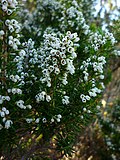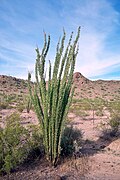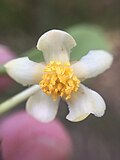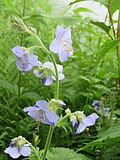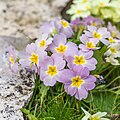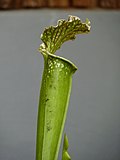Top Qs
Timeline
Chat
Perspective
List of basal asterid families
From Wikipedia, the free encyclopedia
Remove ads
Ericales and Cornales, two orders of flowering plants, are often called the basal asterids.[1][2][3][a][b] Like most asterids, these species tend to have petals that are fused with each other and with the bases of the stamens, and just one integument (covering) around the embryo sac.[3]
The basal asterids include crops such as blueberries, cranberries, tea and Brazil nuts.[6] Kiwifruit was named for its resemblance to the brown body of the kiwi, a national symbol of New Zealand.[7] Dogwoods (Cornus) are often grown for their showy bracts.[8] Black or white ebony wood is commonly used for musical instruments and carpentry.[9] Many Hydrangea species are popular garden ornamentals.[10]
Remove ads
Glossary
From the glossary of botanical terms:
- annual: a plant species that completes its life cycle within a single year or growing season
- basal: attached close to the base (of a plant or an evolutionary tree diagram)
- deciduous: shedding or falling seasonally, as with bark, leaves, or petals
- herbaceous: not woody; usually green and soft in texture
- mangrove: any shrub or small tree that grows in brackish or salt water
- perennial: not an annual or biennial
- succulent (adjective): juicy or fleshy
- woody: hard and lignified; not herbaceous[11]
The APG IV system is the fourth in a series of plant taxonomies from the Angiosperm Phylogeny Group.[1]
There are a few visible traits that can be linked to many of the families. Most Ericales species tend to have woody stems or branches, seed capsules, cellular endosperm and ladder-like vessel perforations.[12][13] Species in Cornales tend to have the same perforations, as well as anthers attached at their base, ring-like nectaries, and cymes, which are inflorescences with lateral stalks that terminate in a flower or another branch.[14]
Remove ads
Families
Remove ads
See also
Notes
- The taxonomy (classification) in this list follows Plants of the World (2017)[4] and the fourth Angiosperm Phylogeny Group system.[1] Total counts of genera for each family come from Plants of the World Online.[5] (See the POWO license.) Extinct taxa are not included.
- Some plants were named for naturalists (unless otherwise noted).
Remove ads
Citations
References
Wikiwand - on
Seamless Wikipedia browsing. On steroids.
Remove ads




















